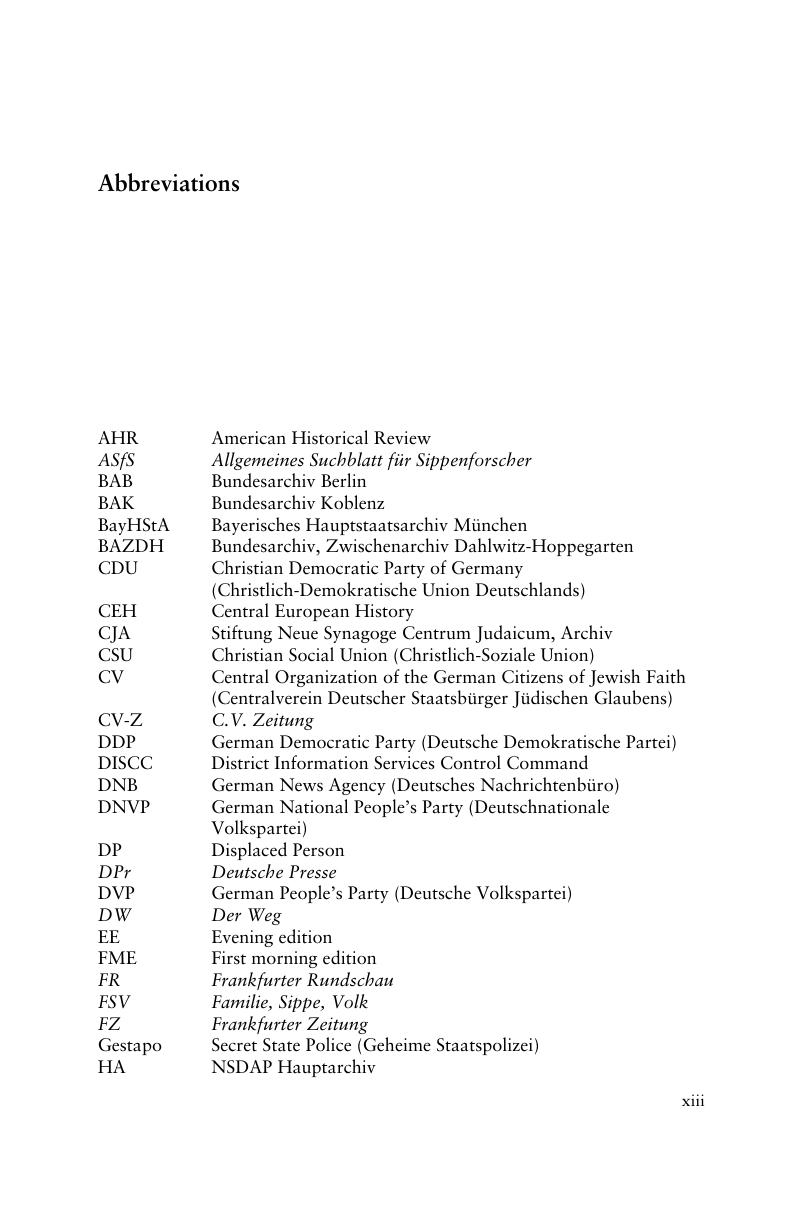Book contents
- Frontmatter
- Contents
- Illustrations
- Acknowledgments
- Abbreviations
- Introduction
- 1 “We Are All Germans; Why Then Ask for Religion?”: Cultural Identity, Language, and Weimar Pluralism, 1928–1932
- 2 “Racial and Social Boundaries between Germans and Jews Are to Be Strictly Drawn”: Dictatorship Building and the Process of Nazifying Language, 1933
- 3 Toward the Eradication of the “Impossible, Untenable Category of ‘German Jews’”: Enforcing and Contesting Racial Difference, 1935–1938
- 4 “The Jewess” Attempted to “Stage a Case on Her Descent”: Linguistic Violence as Part of Genocide, 1941–1945
- 5 “We Are Not Bad Jews, Because We Believe We Are Good and True Germans”: Another Beginning and Persisting Difference, 1945–1948
- Conclusion
- Appendix: Frequency of Key Categories of Germanness and Jewishness
- Bibliography
- Bibliographical Essay
- Index
Abbreviations
- Frontmatter
- Contents
- Illustrations
- Acknowledgments
- Abbreviations
- Introduction
- 1 “We Are All Germans; Why Then Ask for Religion?”: Cultural Identity, Language, and Weimar Pluralism, 1928–1932
- 2 “Racial and Social Boundaries between Germans and Jews Are to Be Strictly Drawn”: Dictatorship Building and the Process of Nazifying Language, 1933
- 3 Toward the Eradication of the “Impossible, Untenable Category of ‘German Jews’”: Enforcing and Contesting Racial Difference, 1935–1938
- 4 “The Jewess” Attempted to “Stage a Case on Her Descent”: Linguistic Violence as Part of Genocide, 1941–1945
- 5 “We Are Not Bad Jews, Because We Believe We Are Good and True Germans”: Another Beginning and Persisting Difference, 1945–1948
- Conclusion
- Appendix: Frequency of Key Categories of Germanness and Jewishness
- Bibliography
- Bibliographical Essay
- Index
Summary

- Type
- Chapter
- Information
- The Language of Nazi GenocideLinguistic Violence and the Struggle of Germans of Jewish Ancestry, pp. xiii - xviPublisher: Cambridge University PressPrint publication year: 2009

